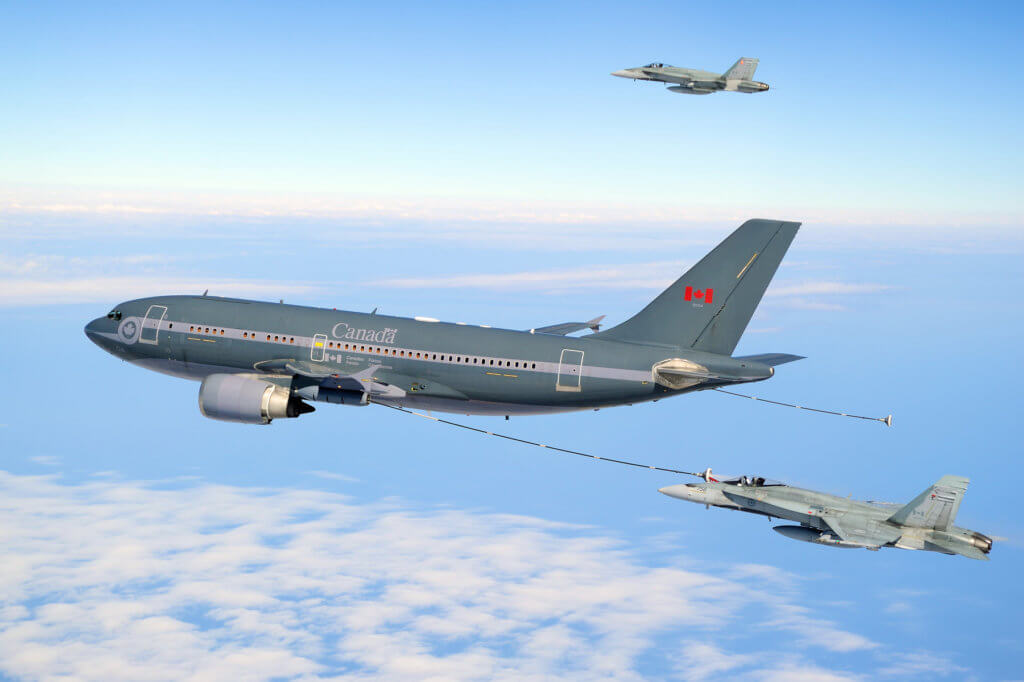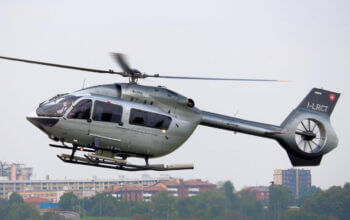Estimated reading time 8 minutes, 19 seconds.
In a report that could foreshadow the Canadian government’s next steps to replace its CF-188 Hornet fighter jets, a House of Commons committee has recommended the government conduct a review of all operational capability requirements for the jet and, within the next 12 months, select a replacement that is able to operate effectively in the high Arctic while making pilot safety “a key consideration,” be interoperable with key allies, and “work to a high degree with Canada’s existing infrastructure.”

The recommendations are among 13 in a report tabled Tuesday, Sept. 20 by the Commons Standing Committee on National Defence. Titled Canada and the Defence of North America: NORAD and Aerial Readiness, the report is an assessment of how Canada remains “ready to defend itself, and North America, against aerospace threats.”
Though the report did not recommend which fighter jet the Royal Canadian Air Force (RCAF) should acquire, it examined some of the big questions that have shaped the fighter debate since the Conservative government announced a sole-source agreement for the Lockheed Martin F-35 Joint Strike Fighter in July 2010, including the need for stealth capability, one or two engines, quantity of aircraft to do the job, and overall cost and impact on other programs.
In fact, the committee recommended the fighter replacement program “have well defined capital and sustainment costs as to not jeopardize the recapitalization of other much-needed military equipment.”
While the recommendations might not be a straightforward recipe for an alternative to the F-35 (which the Liberal Party pledged not to buy during the 2015 election campaign), proposals to make use of existing infrastructure and “recognize the importance of air-to-air refueling as it relates to…sovereignty” suggest the Boeing F/A-18E/F Super Hornet is still very much in play.

The report was based on seven hearings conducted between March and May 2016 in which the committee heard from dozens of senior government and military officials and academics. The committee also visited NORAD headquarters in Colorado Springs. The members of both opposition parties submitted dissenting opinions and accused the majority members of the committee of rushing through the final stages of the draft report without their input.
The committee was told that while Canada faces an unpredictable international security environment, there is no immediate direct military threat from another state. But being surrounded by three oceans and a friendly neighbour is no guarantee: increased military spending in certain regions, the impact of climate change, and global competition for energy resources are among many changes contributing to greater volatility.
An increase in asymmetric threats posed the biggest concern for many security and military officials, but conventional foes still loom large, especially with the resurgence of Russian long-range bomber flights.
“I can assure you that Russia is at the top of our list in terms of countries we watch carefully and monitor closely,” said Stephen Burt, the assistant chief of defence intelligence with the Canadian Forces Intelligence Command.
According to the commander of 1 Canadian Air Division and Canadian NORAD Region, NORAD responded to more than 3,500 possible airborne threats and intercepted more than 1,400 aircraft in Canadian and U.S. airspace between September 2001 and February 2015.
The committee was especially reminded of the importance of North American security to the Canada-U.S. economic relationship. To ensure that partnership remains strong, many witnesses stressed the need for interoperability on military programs.
In fact, one of the key requirements for the next fighter jet, according to RCAF commander LGen Mike Hood, is that it be “seamlessly interoperable” with the U.S. Air Force.
The cornerstone of the defence relationship is NORAD, a partnership established in 1958 that several witnesses argued should be expanded to address security issues in all environments—air, space, maritime, land and cyber. At present, NORAD conducts aerospace warning, aerospace control and maritime warning.
As well as examining the “system-of-systems” capability Canada and the U.S. now deploy to maintain readiness for the NORAD mission, the committee also looked at the rationale for amalgamating what is known as the Tri-Command of NORAD, Canadian Joint Operations Command and U.S. Northern Command into a single bi-national North American defence command and control structure that would be responsible for all domains.
It also recommended a review of the locations of Canada’s two main CF-188 operating bases—3 Wing Bagotville in Quebec and 4 Wing Cold Lake in Alberta—”to ensure they are optimally positioned to respond to asymmetric threats under the auspices of (the NORAD mission known as) Operation Noble Eagle (One).”
While the RCAF has a range of air assets to meet its domestic and international missions, the committee heard that “there is an urgent need to move ahead with the recapitalization of the RCAF.”
“It is clear that billions of dollars will need to be invested in the RCAF in the near future, not only to maintain its level of readiness and to ensure that its contributions to NORAD as well as search and rescue operations, in particular, remain as efficient and successful as can be, but also to enhance its capabilities to respond to any new challenge or threat the international security environment may throw its way,” the report said.
The report also put the complicated and controversial issue of ballistic missile and cruise missile defence back on the table. Five of the committee’s recommendations dealt with the subject, including a suggestion that the “defence policy review reconsider Canada’s position with regard to ballistic missile defence in the context of Canada’s defence priorities and limited financial resources.”
Witnesses told the committee there has been a proliferation of ballistic missiles in recent years, including the “appearance of new and more advanced types of long-range precision cruise missiles capable of being launched from various platforms.” Almost 30 countries now possess ballistic missile capability, and together, “these countries have approximately 50 different variants of ballistic missiles.”
In addition, “there are currently 13 new intermediate-range and eight intercontinental ballistic missile variants under development” in those countries.
Finally, the committee made several recommendations to strengthen northern security, urging the government to “adapt our northern surveillance and defences to a potential Russian threat” and “recognize the need to maintain and improve all aspects of Arctic domain awareness” as the North Warning System reaches the end of its operational life.
While the committee was “impressed with the high state of readiness of NORAD and the RCAF, and with their capacity to defend Canada and North America from various external and internal menaces,” the report concluded that “there may be means to enhance and strengthen the aerospace defence of Canada and North America in a number of ways.”
See the full report here.








